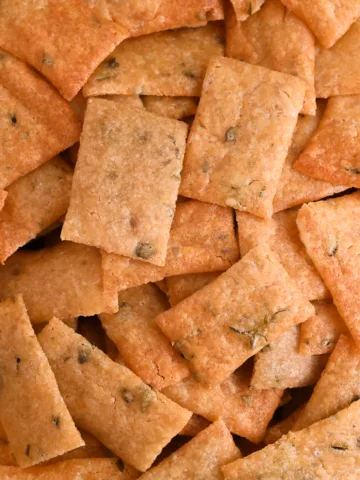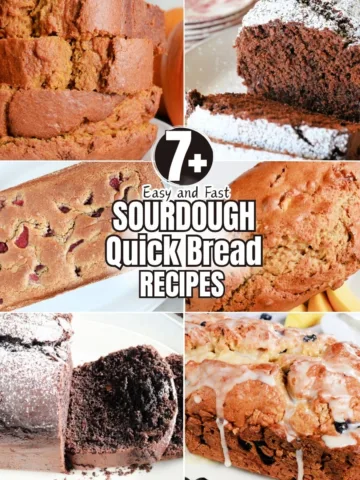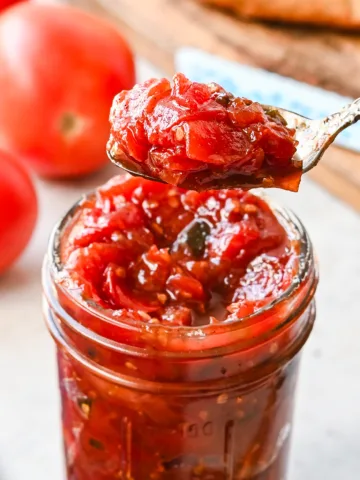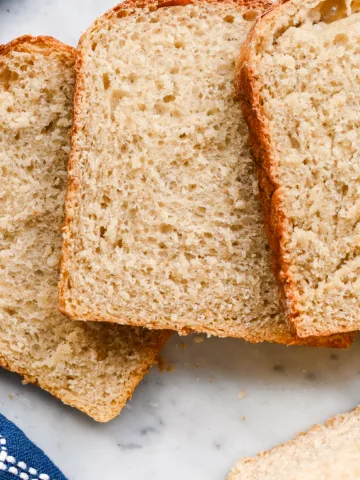Learn how to make an einkorn sourdough bread with this simple recipe. With its beautiful golden color, nutty taste, and nourishing qualities, this bread is so hearty and satisfying, it has become our regular wheat of choice. In this post I will include a step-by-step guide to help you troubleshoot and feel confident working with this tricky wheat.
Table of Contents

History of Einkorn Wheat
This grain has been here since the dawn of time. It is the ancient grain of the ancient grains! It is the world’s only non-hybridized grain, tracing its origins back to 7500 BC in the Tigris-Euphrates regions, now known as parts of Turkey, Syria, and Iraq. This ancient wheat made it’s partial exit during the bronze ages due to higher yield varieties, and eventually it became hybridized to our modern wheats to increase food supply. Yet thankfully, to researchers that worked hard to preserve these ancient seeds, they never went extinct! Good news!

I love to look at old paintings of rolling fields engulfed with brilliant green tall grassess. In a lot of these paintings, you can almost see the movement in the grass as it sways in the wind, almost like a dance across the lands. Einkorn is very similar to this and it is quite possible that the tall grasses that were painted were in fact einkorn! It grows to about five feet tall and is bright green in color as opposed to the modern variety that is more dull in color and more low growing.

Nutrition Found in Einkorn Wheat
Compared to modern wheat, Einkorn tends to have a lower amount of carbohydrates due to its lower amount of starch and contains about 30 percent more protein. Which is probably why my family and I feel very satiated after eating it. It also contains 200% more Lutein, an antioxidant, and it doesn’t stop there! It’s also higher in manganese, riboflavin, zinc, magnesium, thiamin, niacin, iron, and vitamin B6.

Because Einkorn carries more protein than today’s regular flour, the gluten amount could actually be higher, which is a common misunderstanding. But don’t fret my friend! This gluten is weaker in nature, which thankfully can be tolerated by most people with a gluten sensitivity, giving you easier digestion. Not to be confused with those that have celiac disease--totally different story. Consult with your doctor.

This sourdough einkorn bread recipe is a blend of whole wheat einkorn and all purpose einkorn. I like to mill my whole einkorn berries into flour. The mill I recommend is found here. If you do not have a mill you can purchase einkorn whole wheat flour and einkorn all purpose flour here.

Einkorn Makes a Sticky Dough!
If you have ever worked with einkorn flour then you understand how it can be a bit more finicky to work with. If this is your first time, then let me tell you, einkorn dough is incredibly stickier than all purpose flour, whole wheat flour, or bread flour! I've seen and tested a lot of recipes over the years, that have way to much flour added to try to offset the stickiness. It left me with an extremely dense bread. Although still good, just not the best. As you become familiar with working with the flour you'll find that it requires a lot less fuss, meaning: no kneading (only stretch and folds), and a lot less time rising!
This post contains affiliate links, which means I make a small commission at no extra cost to you. See my full disclosure here.

Tips for Working with Einkorn
1. Resist the urge of adding too much flour between stretch and folds! Because this IS a wet dough (to help control the flour amount added), I recommend sprinkling some flour over it, within reason. Wet hands can help manage the stickiness too.

2. Keep the dough in a bowl while doing stretch and folds. This does not need to be done on a countertop, you'll fight the dough less keeping it in your bowl.
3. Use a bench scraper. A bench scraper is incredibly useful (especially with a sticky dough) during the stretch and folds and the shaping of the dough before the last rise.

4. The more you work the einkorn dough the stickier it becomes! Do a few stretch and folds and then walk away!
5. For best results do not skip the folding steps. This will help the gluten develop and form those beautiful air pockets.
6. Cover your dough with a damp tea towel, plastic wrap, plastic bag, or shower cap. This will keep your dough from getting a crust on the outer layer.
7. Use a blend of all purpose einkorn flour and whole wheat. The all purpose will give you that beautiful oven spring!
8. Make sure that the starter you use is a mature starter. It needs to be an active starter fed 4 to 6 hours before using.

What You Will Need
A large mixing bowl, glass bowl, or a ceramic bowl
A banneton basket or proofing basket (I used a medium bowl)
Danish dough whisk (the one I love found here) or a wooden spoon
A tea towel
Kitchen scale
Dutch oven (ceramic or cast iron, mine is cast iron found here)
Piece of Parchment paper
Bowl scraper, bench scraper, or bench knife
Razor blade
Cooling rack

Ingredients
125 grams active starter (about ½ a cup) (This does not need to be an einkorn sourdough starter! This recipe will work with an all purpose flour starter too.)
10 grams of salt (about 1 ½ teaspoons)
290 grams water (about 1 ¼ cups)
200 grams einkorn whole wheat flour (about 1 ⅔ cups)
280 grams einkorn all purpose flour (about 2 cups)

Simple Einkorn Sourdough Bread Recipe
Step 1
In a large bowl combine the all purpose einkorn flour and the whole grain einkorn flour, purified warm water (about 85 degrees), active sourdough starter, and salt. Mix all the ingredients with a danish dough whisk or a wooden spoon. The ingredients do not need to be thoroughly incorporated, just enough to where it is combined pretty well. Cover the bowl, with the dough in it, with a damp kitchen towel. Allow the wet dough to rest at the bottom of the bowl for 30 minutes.

Step 2
After 30 minutes, sprinkle flour on the top of the dough. Add more when absolutely needed. Remember, you can add flour but you cannot subtract it! Using a dough bench scraper, scrape the sides of the bowl and gather the dough together. Sprinkle flour into your bowl so you can move the dough around easier. Mentally divide your bowl into North, South, East, and West sections. Gently start to pull (without tearing) on the "North" side of your dough, stretching it out a bit and folding it over the center. Then grabbing your "South" end of the dough, stretching it out and then folding it over the center. Next, grab the "West" side of the dough. Stretch it out and then fold it over the center. Finally, grab the "East" side of your dough. Stretch it out and fold it over the center. It should be “square-like”. Place a damp cloth or plastic wrap back on the bowl. Let the dough rest for 30 minutes.

Step 3
Repeat step 2, two more times. This takes a total of 3 sets of stretch and folds with 30 minute intervals.

Step 4
Once all 3 sets of the folding process are done, place the dough in the bowl with a damp towel or plastic wrap to cover the bowl. Place on the counter at room temperature (or somewhere warm for a faster rise) for the first rise, until the dough has doubled in size. This can take several hours depending on the temperature of your house (about 4-12 hours, longer if needed)

Step 5
Once the dough has doubled in size, lightly dust a clean work space with flour and place your dough on it. Dust your hands with flour and shape your dough into a ball. I highly suggest using your bench scraper for this as this dough will get sticky the more you work with it! Place a tea towel in a proofing basket or bowl. Flour the tea towel so that the dough does not stick to it during the second rise. Place the smooth surface of the bread dough face down into the cloth. The gathered surface of the dough will be facing up. Place plastic wrap or a damp cloth over the proofing basket with the dough in it, and then place it in the fridge for the overnight rise, for at least 12 hours.

Scoring Your Artisan Bread
Dusting the dough with flour before scoring will help your design pop! I like to use a super sharp razor blade to do this. A very chilled dough is the trick for perfect artistry! The cold dough will be more stable and the blade will cut a lot smoother! The razor blade is thin enough that it makes creating a design easy and fun! Because the gluten in einkorn is weaker, you want to make sure not to go too deep. ¼ inch would be best, and make sure to get it into the oven immediately after scoring.

When Your Sourdough Bread is Ready to Bake
Step 6
After the second rise, when you are ready to bake, preheat your oven to 450 degrees. Place your dutch oven in the heated oven and preheat it for 30 minutes. When the preheating time is up, remove the proofing basket with the dough from the fridge and place it on the counter. Place the dough on a lightly dusted piece of parchment paper and sprinkle the top of dough with flour. Gently rub the flour around the dough with your hands. This will help your pattern stand out more.

Use a razor to score the dough. Carefully remove your preheated dutch oven and place the dough with the parchment paper under it, inside of the dish. Cover the dutch oven with the lid. Place the dutch oven back in the oven and bake for 25 minutes. Once the 25 minutes is up, remove the lid and bake for another 15 minutes. This will give your loaf of bread a beautiful color! Once fully cooked and golden brown, remove the bread from the dutch oven and place it on a wire rack to cool. Wait and serve until it is completely cool! Try this einkorn sourdough bread with my delicious homemade butter recipe! How To Make Easy Homemade Butter From Raw Milk.
Other Sourdough Recipes
Easy Same Day Sourdough Bread (Beginner’s Recipe)
Easy Sourdough Bread Recipe Without A Dutch Oven
Easy No-Knead Sourdough Bread Recipe for Beginner’s
More Sweet Sourdough Recipes
Peanut Butter with Chocolate Sourdough Bread Recipe
Best Sourdough Bread Recipe with Almond and Raisins


Easy Recipe for How to Make Einkorn Sourdough Bread
Ingredients
- 125 grams active starter about ½ a cup (This does not need to be an einkorn sourdough starter! This recipe will work with an all purpose flour starter too.)
- 10 grams of salt about 1 ½ teaspoons
- 290 grams water about 1 ¼ cups
- 200 grams einkorn whole wheat flour about 1 ⅔ cups
- 280 grams einkorn all purpose flour about 2 cups






Ron Eggemeyer says
Thank you for your work and comments.
Stephanie says
Thank you for your support!